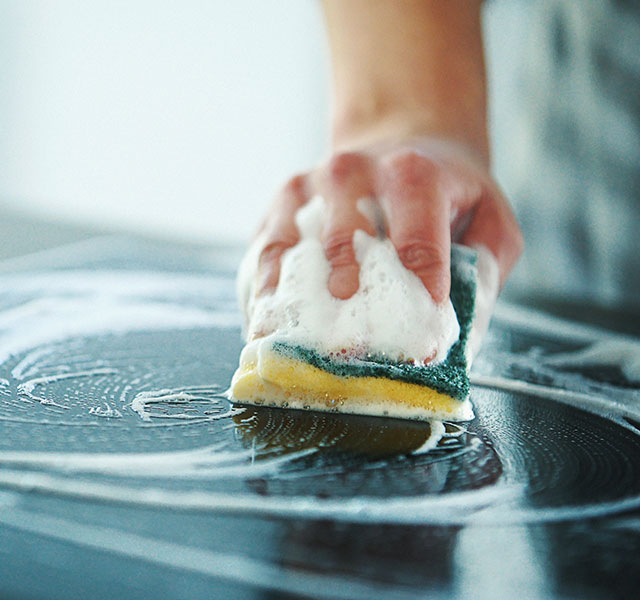Even the cleanest-looking kitchens may be harboring some dirty secrets. Surfaces in your kitchen — as well as sponges, rags and towels — can trap and spread germs that lead to foodborne illnesses.
“As many as 76 million Americans contract foodborne illnesses each year,” says Smitha Gudipati, M.D., an infectious disease specialist at Henry Ford Health. Studies have found that residential kitchens frequently house illness-causing bacteria such as norovirus, salmonella, campylobacter and E. coli.
These bacteria are nothing to mess with, but with careful kitchen cleaning and food prep, you can help avoid the hazards they pose.
Avoid Cross-Contamination
“Hand hygiene is the most important thing you can do to avoid cross-contamination in the kitchen,” says Dr. Gudipati. “Good hand-washing technique is key.” That means using soap and water and scrubbing for at least 20 seconds. Be sure to scrub all areas — including easily missed spots like thumbs, tips of fingers and backs of your hands.
You should always wash your hands — as well as any surfaces you’ve used — immediately after handling foods like eggs, raw meat or flour. If you don’t, you risk cross-contaminating surfaces. For example, if you’ve been cutting raw chicken and then you open the refrigerator to put it away, you can transfer potentially harmful bacteria from the chicken to your hands to the fridge handle. And the next person who opens the fridge now has that bacteria on their hands.
Keep Surfaces Clean
Some types of bacteria can live on surfaces for longer than you might think. Salmonella can linger for up to four hours. Other bacteria (such as norovirus) can survive several days. “To be safe, you need to clean and disinfect high-touch surfaces — such as faucet handles, doorknobs and refrigerator door handles at least once a day,” says Dr. Gudipati.
Counters and cutting boards should be cleaned and disinfected immediately after you’ve been dealing with raw eggs, raw meat or flour. “You need to make sure those surfaces are disinfected before they are used to prepare other food — especially anything that’s going to be eaten raw,” says Dr. Gudipati.
Check your cutting boards regularly for cracks, nicks and crevices. “That’s where bacteria can hide,” she says. So when you notice lots of crevices, it’s time to replace the board. According to Dr. Gudipati, hardwoods like maple are best at resisting bacteria.
Banish Kitchen Sponge Bacteria
There’s nothing bacteria love more than warm, moist environments. That’s why your kitchen sponges and towels are prime spots for dangerous germs to thrive.
“Sponges are the most prone to contamination because they have a porous surface and bacteria can just creep up in there,” says Dr. Gudipati. To be safe, she recommends disinfecting your kitchen sponge daily. Wash it in hot, soapy water, then microwave it for two minutes. You can also run sponges through the dishwasher. And even with daily cleaning you should replace it with a new sponge every week.
If you use a kitchen hand towel just to dry clean hands, replace it every few days. If you have a towel that’s soiled or cross-contaminated, replace it immediately.
To find a doctor at Henry Ford, visit henryford.com or call 1-800-436-7936.
Smitha Gudipati, M.D., is an infectious disease specialist at Henry Ford Health. She sees patients at Henry Ford Hospital and Henry Ford West Bloomfield Hospital.



